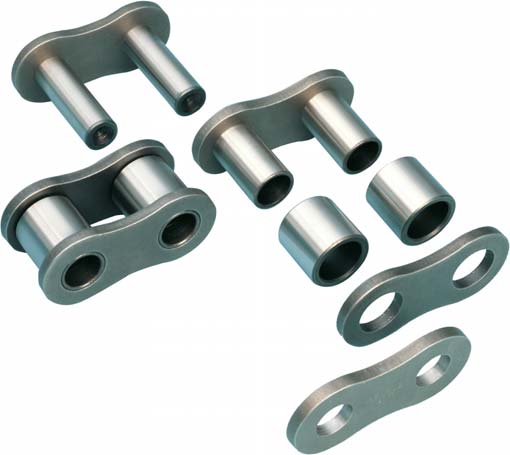Connecting Hyperlink – Press Fit (BS/DIN/ANSI)
The normal connecting link for ANSI series detachable chains, also utilized on riveted chains wherever higher speeds or arduous problems are encountered. Supplied with two connecting pins riveted to the outer plate, another outer plate being a press match onto the pins and secured by split pins after assembly. Press match connecting back links can only be used as soon as; new backlinks must generally be used to replace dismantled hyperlinks.
Cranked back links
Other than the specialized chains in which the cranked website link is an important design characteristic, cranked back links are applied only the place the chain length needs to be an odd quantity of pitches. This practice just isn’t advisable; all drives ought to, wherever achievable, be created with enough total adjustment to guarantee using an even number of pitches all through the chain. Don’t USE CRANKED Links ON IMPULSIVE, Remarkably LOADED OR Large Speed DRIVES.
Cranked Hyperlink – Slip Match (BS/DIN) Offset Link – Slip Match (ANSI)
Just one website link with cranked plates pressed onto a bush and roller assemble in the narrow end.  A clearance match connecting pin (No. 128) is fitted at the wide finish and is secured by a split pin.
A clearance match connecting pin (No. 128) is fitted at the wide finish and is secured by a split pin.
Cranked Website link Double (BS/DIN) Two Pitch Offset Link (ANSI)
Double cranked backlinks are available for many sizes and styles of chain. The unit includes an inner link (No. four), with cranked links retained completely in position by a riveted bearing pin. Screw operated extractors break chain by forcing the end softened bearing pins out of the outer hyperlink plates. For other manufacturers of chain, the rivet swell will have to first be ground away.